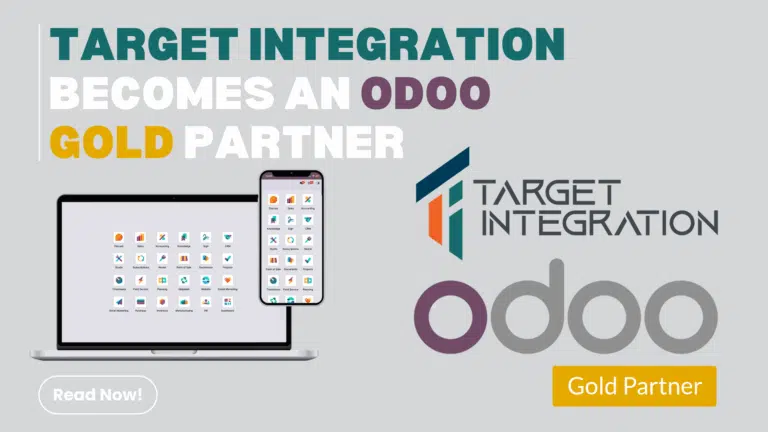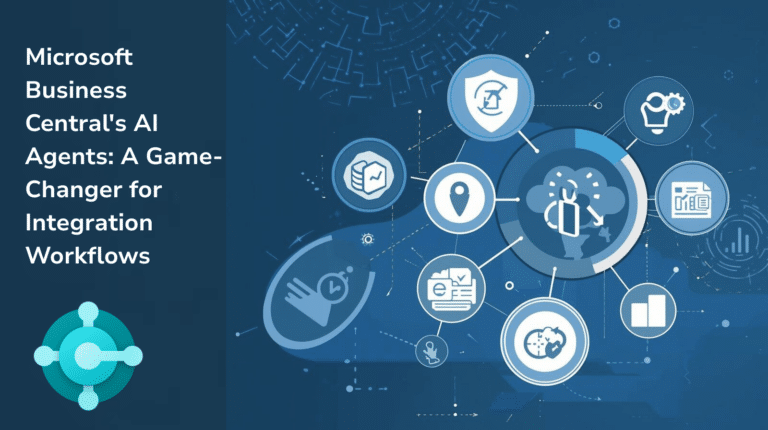Every day, software companies roll out updated versions of their existing software and introduce entirely new applications to keep up with evolving business needs. It can be daunting to stay on top of learning numerous new tools each year.
Teaching employees how to use new software through manual methods would be both ineffective and resource-intensive. Fortunately, there is an affordable and accessible solution that enables staff to acquire these skills while they work – it’s called a digital adoption solution (DAS).
However, what exactly are DASs, and why are they so crucial? How can you pinpoint the most suitable one for your team and organization? Additionally, what role does a digital adoption platform (DAP) play in this context? All of these questions can be thoroughly explored by delving into the realm of digital adoption solutions.

What Is Digital Adoption?
Digital adoption is the process of integrating new technology into business operations to enhance existing processes or facilitate new ones. This entails planning the technology requirements, researching suitable software or other technologies, and procuring licenses for multiple users.
A separate challenge arises when the technology is introduced to individual staff members’ systems, known as user adoption. Learning how to effectively use new software takes time, and any means to streamline this process can lead to significant resource savings. This is where digital adoption solutions come into play, providing a single platform for guiding and explaining the use of multiple applications, thus reducing support costs.
Digital Adoption Platforms vs. Digital Adoption Solutions
The distinction between a digital adoption platform and a digital adoption solution primarily depends on preference. Gartner refers to them as digital adoption platforms, while organizations use the term digital adoption solutions. Essentially, they refer to the same concept. Let’s delve into the specifics of what precisely a DAS entails.
What Is a Digital Adoption Solution?
To define digital adoption solutions, it’s essential to begin by addressing the challenges they are designed to tackle. In the modern business landscape, technology adoption takes centre stage in an organization’s priorities. This places a constant burden on employees to adapt to and learn new software solutions.
Organizations cannot afford to bypass this adaptation process, so a solution must be crafted to help staff effectively navigate these technological changes. But why is there such a pressing need for digital adoption, digital transformation, and the subsequent use of digital adoption solutions (DASs)?
The Foundation of Digital Adoption Solutions
To understand DASs, we must explore three fundamental concepts: digital transformation, digital adoption, and, finally, DASs. Digital transformation takes precedence, as it signifies the necessity for change, leveraging new technology to ensure market resilience. Next, digital adoption encompasses the process of staff members embracing the technology introduced as a result of an organization’s digital transformation. DASs follow suit as they streamline the adoption process to facilitate a smooth and efficient transformation.
When Are Digital Adoption Solutions Necessary?
These three concepts underpin an organization’s ability to remain resilient in the face of various factors. These factors can be categorized into drivers of change that underscore the need for DASs:
- Crises – DASs play a pivotal role in supporting staff as they adapt to new technology, enabling organizations to respond positively and innovatively to crises, such as pandemics. The COVID-19 pandemic illustrated which companies could thrive during a crisis by implementing systematic, cost-effective changes where necessary.
- Pressure – Successful organizations exhibit a proactive response to both internal and external pressures. External pressure, like negative public relations (PR), can be effectively managed. For instance, when ride-sharing company Uber faced negative media attention, it adjusted its response to withstand media pressure. DASs can aid staff in modifying their software usage when external pressures necessitate organizational changes.
- New technology – Technology is integral to every facet of contemporary business operations, and user onboarding is a substantial component. Investing in and staying current with emerging technologies, such as artificial intelligence, cloud transformation, and machine learning, is essential for organizational sustainability. However, these technologies are of limited value if staff cannot effectively utilize them, highlighting the significance of investing in and continuously researching the latest DASs. As an example, Snapchat recognized the growing capabilities of smartphone camera technology and, as a result, increased its daily users significantly over time.
- Mergers and acquisitions – Mergers and acquisitions often raise anxiety among employees, as these endeavours are not always successful due to the factors mentioned above. Strong leadership can make a difference, as seen in the successful merger of Disney and Pixar, despite vastly different cultures. DASs can play a unifying role during these transitions, as all employees, whether existing or new, can use the same DAS software to navigate the diverse software systems they encounter.
Digital adoption forms the backdrop for understanding why organizations require DASs. Now, let’s delve further into this concept.
Is Sufficient Investment Allocated by Companies for Employee Digital Training?
An annual investment survey carried out by the European Investment Bank, encompassing 13,500 firms in Europe, has unveiled a notable trend. While companies have been ramping up their investments in novel digital products, their allocation for training employees in utilizing this software has dwindled. This survey, in operation since 2016, underscores a concerning pattern in European businesses.
European companies are funnelling more resources into the development of new digital products, including software, applications, and websites. However, concurrently, they are scaling back their financial commitment to ensure that their workforce is adept at efficiently using these new technological tools. This shift is disconcerting for several reasons. Firstly, it implies that businesses may not be fully capitalizing on their investments in digital technology, as they fall short of harnessing the full potential of these products. Secondly, it hints at a prioritization of short-term considerations over long-term growth, as employee skill development investments take a back seat.
To enable European businesses to flourish in the increasingly competitive digital economy, there is a pressing need to incentivize greater investments in employee training. Possible strategies include offering incentives or subsidies to firms that prioritize skills development or fostering collaborations between businesses and educational institutions to expand access to high-quality training programs.
According to the survey, the percentage of companies introducing new products and processes into their operations increased from 22% to 26-27% in the 2019-20 period. Likewise, the percentage of companies innovating in their products, processes, and services rose from 32-34% to 35-41% post-2019. Conversely, the portion of the budget allocated to employee training decreased from 10.4% to a range of 9.4-9.6% during the same time frame. Concurrently, expenditures on software, data, and IT network infrastructure surged from 12-13% to exceed 15%.
Therefore, despite a substantial increase in the number of companies investing in digital products and innovation, businesses within the European Union have decreased their commitment to employee training. This underscores the significance of Digital Adoption Solutions, which provide an accessible and cost-effective means to educate and prepare their workforce for evolving needs.

How to Gauge the Effectiveness of a Digital Adoption Solution?
The success of digital adoption can either be a company’s saviour when executed efficiently or its downfall if handled inefficiently. Inefficiency is the very issue that digital adoption solutions aim to rectify, but they can also be a source of significant frustration when implemented ineffectively, leading to more wastage. How can we ensure that Digital Adoption Solutions solve more problems than they create?
Establishing Objectives
Before embarking on your digital transformation journey, it is imperative to outline the objectives you aim to accomplish with the adoption solution. What are the desired outcomes to be achieved through the implementation of this digital adoption strategy? Having a clear destination in mind sets the stage for a seamless journey with your Digital Adoption Solution (DAS).
Defining Key Performance Indicators (KPIs)
What path will these KPIs guide us along to realize our overarching goals? Focusing on a select set of metrics that align with your objectives can help maintain a sharp focus on achieving success. Furthermore, for each KPI, it is essential to record the rationale behind its selection.
Utilizing User Analytics
In this context, it is crucial to employ the appropriate tools for the task. This prompts the essential question: What type of data, experience-based or numerical, should we analyze to ensure the attainment of our KPIs? Additionally, how frequently should we review the analytics? An intricate plan is indispensable, not only for data generation but also for the data analysis process, aiming for optimal outcomes.
Creating a comprehensive plan is indispensable to extract the maximum benefits from any DAS. Without a well-thought-out plan, the implementation of a DAS can lead to frustration, squandered resources, and, in more severe scenarios, significant structural vulnerabilities for your organization.
10 Advantages of Digital Adoption Solutions
Digital Adoption Solutions (DAS) offer numerous benefits. Here are the ten most significant advantages of utilizing DAS:
- Automate Training Solutions: In-app guidance enables employees to acquire information on demand. For example, Salesforce users can follow step-by-step instructions provided by a DAS for automated tasks, simplifying complex workflows.
- Enhance User Experience: DAS guides to streamline the use of intricate software without requiring human intervention. This boosts employee engagement by reducing the frustration of learning new tools and allowing users to focus on tasks. DAS also shortens user onboarding for both staff and customers.
- Reduce Technical Support Costs: Decreasing technical support calls lowers costs for both the organization and end users. Users become more autonomous and productive, leading to increased engagement, confidence, and motivation.
- Accelerate Onboarding, Training, and Adoption Programs: Faster time-to-competency results in a quicker return on investment (ROI). In-app guidance from DAS helps staff learn software more efficiently, expediting the customer onboarding process and enhancing user engagement.
- Improve Employee Productivity and Motivation: Proficiency levels rise, leading to increased productivity. DAS prevents employee skills from stagnating by promoting specific software features.
- Increase Software Utilization: Encouraging employees to utilize more software capabilities delivers added value. Full software adoption leads to maximum efficiency and effectiveness, and DAS aids in improving user adoption rates.
- Enhance Software Platform ROI: DAS helps organizations extract more value from their software investments and workforce, ultimately improving the bottom-line ROI.
- Knowledge Retention: DAS enhances software adoption and staff experience management, reducing frustration and increasing satisfaction. This aids in staff retention and avoids the loss of valuable company knowledge and experience.
- Improve Sales Enablement: DAS offers significant benefits to sales enablement, empowering sales teams to utilize software tools optimally. It enhances employee performance, resulting in more inbound and outbound leads and improved company profits.
- Optimize Customer Retention: Effective DAS implementation helps customers understand a company’s products, increasing the likelihood of their return.
Think of DAS as the lubricant necessary to propel digital adoption toward the destination of digital transformation. When you see these features in a DAS, you’ll know it’s an effective tool for your organization.

Why Are Digital Adoption Solutions Vital for In-App Training?
Have you ever noticed those informative pop-up balloons that appear the first time you use a new app? These balloons are a fundamental component of a built-in digital adoption solution for mobile app users. They are a part of the app itself and serve as guides to show you how to use it, ensuring a consistent user experience.
In most cases, these balloons only appear when you first use specific features within the app. For an organization to turn regular users into power users or advocates and achieve customer success that translates into company success, product adoption is crucial. However, product adoption cannot occur if customers struggle to use a product or service. In-app training serves as the ideal solution for achieving customer retention.
Think of it this way: the customer onboarding process is akin to adding them to a list, but in-app training is where you take the time to get to know them and build a professional relationship. This phase is where organizations establish loyalty between themselves and their customers, ultimately achieving customer retention.
Advocate users personally invest in the organization through the app they use to access services or products. These advocates leverage word-of-mouth, social media, and positive online reviews to encourage others to join their preferred company or service, effectively providing free marketing for organizations. In-app training is crucial during this stage, as it’s the deeper, secondary, or tertiary functions of an app that transform users into advocates.
Employee onboarding is equally significant as customer onboarding, as everyone goes through the process of being convinced of a product or service’s value. Employees understand the need to adapt to new software adoption, but the “aha” moment occurs when they discover the full capabilities of a new software piece and learn its deeper features at their own pace.
Organizations can take an extra step by creating software specifically tailored for staff, customers, or both for any new app. A custom Digital Adoption Solution (DAS) provides detailed, in-depth instructions on how to use the app, enhancing user efficiency. Consequently, in-app training solutions employing DAS contribute to the improvement of both staff and customer success when accessing an organization’s services.
Selecting the Optimal Digital Adoption Solutions for Your Organization
You’ve recognized the importance of investing in a Digital Adoption Solution (DAS). However, the challenge remains: which digital adoption solutions offer the best value for your organization’s objectives and resources? Before investing in DAS Software as a Service (SaaS) or enterprise software, it’s crucial to consider several key questions:
- Who is the intended audience for the DAS – customers or employees?
- What type of organization do we represent?
- What are the specific goals we aim to accomplish with the DAS?
- On which platforms is the DAS likely to be utilized?
Providing answers to these inquiries equips a CEO with the knowledge to determine which DAS aligns best with their organization’s needs. The marketplace offers various digital adoption solutions, so ensuring that your investment is optimized with the most suitable options is of paramount importance.
Characteristics of an Effective Digital Adoption Solution
Despite Gartner’s recent recognition of the digital adoption solutions category, these tools have been evolving since WalkMe introduced the first Digital Adoption Platform (DAP) nearly a decade ago. While there are now numerous digital adoption solution providers, enterprises must exercise caution when selecting a tool that aligns with their unique requirements.
Here are three key features that your digital adoption solution should incorporate
Intuitive Guidance and Engagement Enhanced by Machine Learning
First and foremost, when you inquire about what defines a digital adoption solution, the response should resemble a digital trainer. Your digital adoption solution should simplify online processes by delivering step-by-step, in-app guidance. Just like a GPS, it should lead users through any task, enabling them to complete complex processes without traditional training. This eliminates the need for additional training when system updates or new features are introduced. Digital adoption solutions represent the next step in training methods, offering a significant improvement in return on investment compared to conventional training, which is often hindered by the Ebbinghaus forgetting curve. Furthermore, your digital adoption solution should employ advanced artificial intelligence and contextual awareness to engage users proactively with relevant content based on their location, time, system, predicted behaviour, and interactions with the software. It should also provide notifications about relevant news or changes within the application, even on the user’s computer desktop.
Insights Beyond Analytics
A top-tier digital adoption solution acts as a data analyst. It should not merely provide user analytics but deliver valuable adoption insights to guide transformational change. Senior staff should have the ability to monitor every user’s behaviour with ease, allowing them to track the adoption of critical processes over time. This feature provides insights into user struggles, underutilized features, and inefficiencies. Advanced AI should help identify behaviours leading to errors and wasted time, with leading digital adoption solutions offering the capability to watch real user session videos.
Advanced Automation and AI Assistance
Lastly, a digital adoption solution can be viewed as a robotic assistant. Robotic Process Automation (RPA) involves automated processes replacing human actions. This mechanism efficiently manages a digital adoption solution, conserving resources and enabling staff members to learn a system by actively using it for business processes, thereby boosting productivity. Attended RPA employs robots that learn from users’ actions and suggest subsequent steps based on these actions, simplifying the user experience and enhancing productivity. This automation and AI integration should facilitate the identification of process inefficiencies, allowing the rapid creation of automated processes from end to end, eliminating the burden of tedious administrative tasks, and empowering employees to confidently and effectively use digital tools. With the right digital adoption solution, the prospect of flawless data entry and efficient utilization of digital tools becomes a reality.

What Does the Future Hold for Digital Adoption Solutions?
The essence of digital adoption is agility and the ability of organizations to employ technology to evolve and respond to shifting consumer demands. So, what lies ahead in the future of digital adoption solutions?
Omnichannel Solutions: A Vision for 2030
Following the impact of the COVID-19 pandemic, consumer digital adoption witnessed a substantial surge within the online retail sector. Consumers perceived notable health and safety advantages in shopping online. However, as the pandemic’s impact subsided, consumers did not return to physical stores in the same numbers as before.
McKinsey recommends a 2030 vision that incorporates an omnichannel approach, aimed at optimizing experience management for maximum customer success in physical retail establishments. McKinsey’s user analytics have revealed that 30-40% of cosmetics in Asia are being purchased online, shedding further light on user behaviour.
The proposition is for organizations to adopt omnichannel solutions by merging physical and technological adoption. This entails incorporating features like social media integration within stores and the consolidation of physical stores into larger, flagship locations.
Sephora stands as a leading example of omnichannel experiences, offering a beauty app that not only displays product availability online and in physical stores but also utilizes smartphone cameras to demonstrate how a product would look to the user, thus personalizing the user experience.
Omnichannel solutions will necessitate the deployment of new technology adoption solutions for organizational staff, requiring advanced features in Digital Adoption Platforms (DAPs) to facilitate staff understanding of these emerging technologies.
Why opt for a Digital Adoption Solution?
The question is not so much why opt for digital adoption solutions but why not utilize them. The necessity for digital adoption has evolved over decades in various forms and is now more vital than ever. Technology adoption forms a significant component of an organization’s ability to remain agile, competitive, and sustainable, with digital adoption solutions serving as the core of this paradigm.
In the fast-paced world of business, staff must quickly comprehend and make effective use of new technologies, and DAPs offer a fitting solution to this challenge. DAPs delve into the essence of digital adoption, offering a seamless mechanism for staff to embrace digital solutions effortlessly. These platforms empower staff to operate various applications within a single software interface, guiding them on the most effective methods to optimize their experience and productivity.
The outcome of employing DAPs is that companies continue to bolster their revenues through technology adoption in a perpetually evolving and efficient manner. This rationale underscores the indispensability of digital adoption solutions, particularly DAPs, in today’s dynamic and ever-evolving market.




